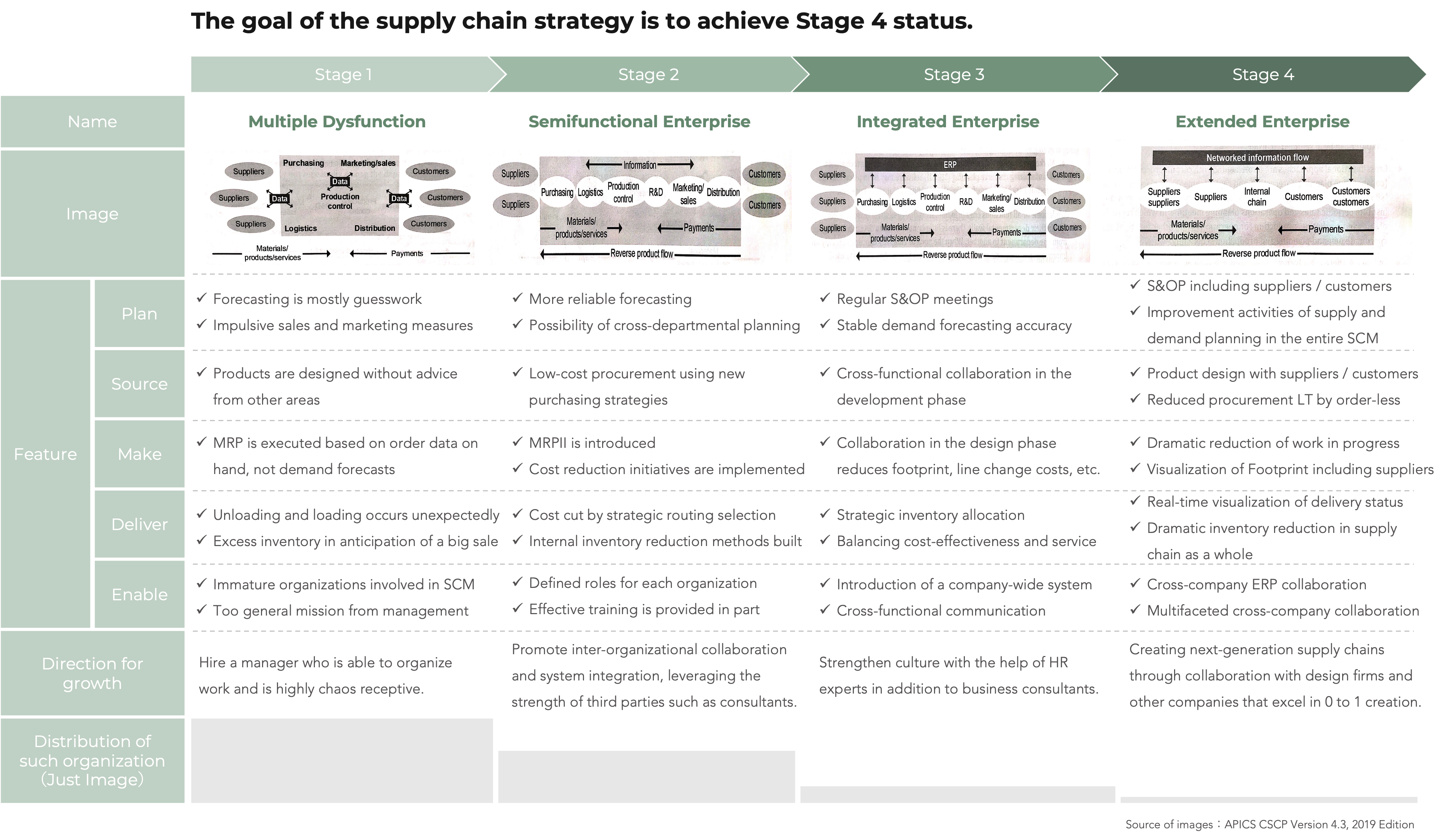Introduction
This is the first self-study article that I would like to commemorate, and I am going to write about a framework that I think all people involved in SCM would benefit from knowing. Its name is “Supply Chain Maturity“. It is a niche topic right from the start.
I was involved in SCM in Japan but had never heard of it until I studied CSCP. In Japan, there are few opportunities to learn the SCM area systematically. In particular, in SCM, although one may hear about individual successful cases that have been used for a long time, there seem to be few opportunities to extract the common elements from those cases and come into contact with the standardized rules. How is such a thing possible? Perhaps the US is skilled at this. A solid framework exists.
This time, we will learn about Supply Chain Maturity by borrowing a framework from the Certified Supply Chain Professional (CSCP) materials, which is a certification from APICS (now ASCM). I believe that this will help you understand where your organization is now, and give you a better idea of the direction of measures you should take to improve your SCM level.
Basically, in this blog, I will borrow theories and frameworks from the APICS CSCP learning content, which I acquired in 2019, while also weaving in ASCM member seminars, international SCM blogs, and my own experiences as a consultant and supply and demand planner for a cosmetics manufacturer, to write about topics that can be applied in the SCM field, as they come up.
The CSCP itself is a comprehensive qualification that emphasizes learning the entire supply chain, so the content may not be enough for those who want to deepen their individual specialties.
“I’m in the Purchasing Department, but what does the Logistics Department or Marketing Department next door do?” Or, “As a new graduate, I was assigned to an SCM project, but what area of business improvement am I currently working on and what impact will it have?” I think these questions will be answered. (I myself had a cathartic experience when I started learning about CSCP and all those questions were answered.)
Please understand that this is a completely personal blog, so updates will be infrequent.
Stages of evolution in SCM
According to APICS, there are four levels of maturity in the supply chain.
Stage 1 : Multiple Dysfunction
Stage 2 : Semifunctional Enterprise
Stage 3 : Integrated Enterprise
Stage 4 : Extended Enterprise
The following is a summary slide. This is combined with another framework called SCOR Model, which will be studied later.

Notes on using the Supply Chain Maturity Model
Before proceeding, please note the following points to keep in mind when using the Supply Chain Maturity framework.
- It is common for an organization to be in two different stages. It is a continuous rather than discontinuous evolutionary process.
- The experts have already agreed that there are four or five stages. This is just a reference to the latest version of APICS as of 2019, which uses four stages.
- The stages of supply chain evolution will continue to change, just as globalization and technological advances have created these stages. Therefore, this framework is not absolute.
- There are many other frameworks for supply chain maturity besides APICS. If you are interested, please Google “Supply Chain Maturity Model.” I think you should adopt the one that seems to match when you draw a picture of the current situation and what it should be in a project.
- Once you have achieved Stage 4, it is not a matter of settling down at that stage. It is necessary to make unrelenting efforts to stay in Stage 4 continuously.
We will look at the contents of each stage in the next post.
